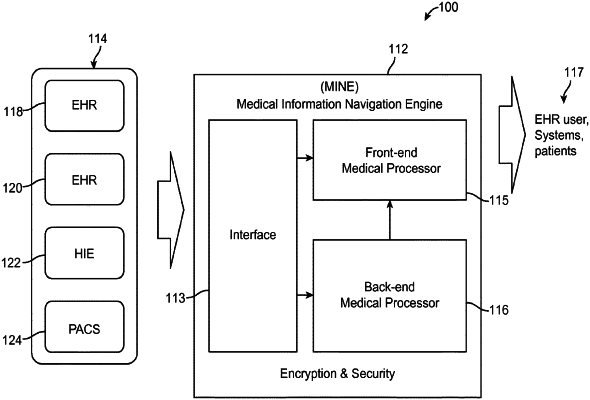| CPC G06Q 30/0283 (2013.01) [G06Q 40/08 (2013.01); G16H 10/20 (2018.01); G16H 10/60 (2018.01); G16H 50/70 (2018.01)] | 17 Claims |

|
1. A Medical Information Navigation Engine (“MINE”) including at least one hardware processor configured to:
convert medical information formatted in various formats into a format to facilitate search speed for data queried from the medical information, the medical information associated with a plurality of patients;
generate, using the converted medical information, a plurality of patient state timelines, wherein a subset of the plurality of patient state timelines includes at least one state of interest;
generate a plurality of impact measures for each of the plurality of patient state timelines, wherein each impact measure is a cost of services provided at a given time to transition from one state to another;
generate a probability distribution of future impacts by summing all impact measures after the at least one state of interest occurs for each of the subset of the plurality of patient state timelines;
generate a suggestion model by analyzing the probability distribution of future impacts; and
apply the suggestion model to one patient state timeline to generate recommendations for the corresponding patient.
|